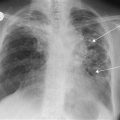Hemiplegia
Hemiplegia is paralysis of one side of the body; it usually arises from unilateral lesions above the midcervical spinal cord.
History
Onset
The speed of onset of hemiplegia is useful when trying to determine the underlying aetiology. Sudden onset hemiplegia is usually due to a cerebrovascular event such as a TIA, infarct or intracerebral haemorrhage. Hemiplegia developing over minutes or hours after trauma can be due to an evolving extradural or subdural haemorrhage. Although a history of trauma is usually evident, chronic subdural haematomas in the elderly may result from tearing of bridging veins without apparent trauma. Subacute hemiplegia may also result as part of a spectrum of neurological deficits caused by demyelination from multiple sclerosis. Gradual onset of hemiplegia is usually due to a tumour, although a cerebral abscess or chronic subdural haemorrhage may pursue a similar time course.
Precipitating factors
A history of trauma may be evident with extradural and subdural haemorrhages. Cerebral abscesses may result from haematogenous dissemination of bacteria from a distant site of infection, such as the lung, or more commonly from adjacent infections, such as middle ear, mastoid and paranasal sinus infections. Transient hemiplegia may also result from an epileptic seizure and this phenomenon is known as Todd’s paralysis. Unfortunately, the precipitating factor for the seizure may be underlying structural abnormalities such as a cerebral abscess or tumour.
Associated symptoms
Owing to the multifocal nature of demyelination, patients with multiple sclerosis may present with a host of associated symptoms, such as areas of motor deficits, sensory deficits, diplopia and monocular blindness from optic neuritis. Space-occupying lesions such as extradural haematoma, brain tumour and cerebral abscesses may also present with symptoms of raised intracranial pressure, such as headaches, classically worse in the morning, and with coughing or sneezing, nausea, vomiting and drowsiness.
Examination
The neurological examination is the key to determining the location of the lesion. Cortical lesions impinging on the motor area of the frontal lobe produce total contralateral paralysis. Similar effects can result from lesions of the internal capsule. Midbrain lesions tend to produce ipsilateral neurological deficits of the face and contralateral deficits of the limbs. Multifocal neurological deficits may be produced by demyelination or cerebral metastasis.
After determining the site of the lesion, the examination should be continued to determine the cause. Pyrexia should alert the clinician to the presence of infection, which may be caused by a cerebral abscess. The presence of facial myokymia, which is rippling of the muscles on one side of the face, is reported to be very suggestive of multiple sclerosis; cervical involvement may produce Lhermitte’s sign, which is paraesthesia of the hands and feet on flexion of the neck.
Examination of the ear, mastoid and sinuses is useful to locate the site of primary infection, which may give rise to a cerebral abscess. Distant sites of infection that may precipitate cerebral abscesses are the lungs and emboli from infective endocarditis. The fingers are examined for nailfold infarcts with endocarditis and the precordium is auscultated for new or changing murmurs. The pulse is assessed for irregularity from atrial fibrillation, which is a predisposing factor for cerebral emboli. The blood pressure is measured, as hypertension is an additional risk factor for stroke. Carotid bruits from atherosclerotic plaques may be the only examination feature present with TIAs. Leg examination may reveal a deep vein thrombosis with possible paradoxical embolus.
General Investigations
Specific Investigations
■ Blood cultures
For suspected cerebral abscess.
■ CT head
Intracerebral haemorrhage, cerebral infarction, head injuries, tumour and abscess.
■ MRI head and cervical spine
Abscess, tumours, focal demyelination and periventricular plaques with multiple sclerosis.
■ Lumbar puncture
Exclude raised intracranial pressure first. With multiple sclerosis, there is raised CSF IgG and oligoclonal bands are present on electrophoresis.
■ Ultrasound and Echocardiogram
Leg deep vein thrombosis and cardiac septal defect with paradoxical embolus.




